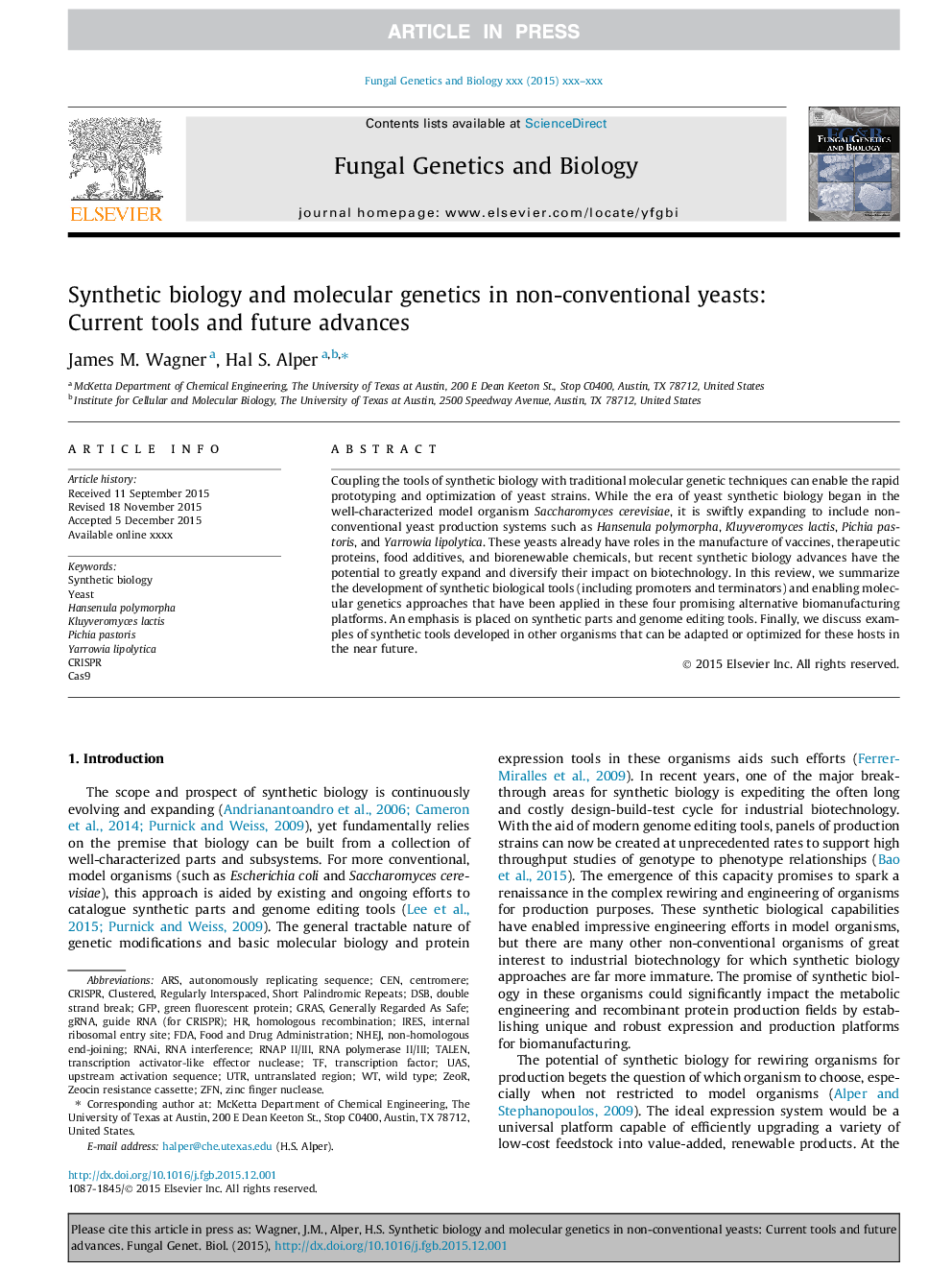| Article ID | Journal | Published Year | Pages | File Type |
|---|---|---|---|---|
| 8470589 | Fungal Genetics and Biology | 2016 | 11 Pages |
Abstract
Coupling the tools of synthetic biology with traditional molecular genetic techniques can enable the rapid prototyping and optimization of yeast strains. While the era of yeast synthetic biology began in the well-characterized model organism Saccharomyces cerevisiae, it is swiftly expanding to include non-conventional yeast production systems such as Hansenula polymorpha, Kluyveromyces lactis, Pichia pastoris, and Yarrowia lipolytica. These yeasts already have roles in the manufacture of vaccines, therapeutic proteins, food additives, and biorenewable chemicals, but recent synthetic biology advances have the potential to greatly expand and diversify their impact on biotechnology. In this review, we summarize the development of synthetic biological tools (including promoters and terminators) and enabling molecular genetics approaches that have been applied in these four promising alternative biomanufacturing platforms. An emphasis is placed on synthetic parts and genome editing tools. Finally, we discuss examples of synthetic tools developed in other organisms that can be adapted or optimized for these hosts in the near future.
Keywords
CentromereNHEJGRASgRNAUASARSKluyveromyces lactisCENIRESYarrowia lipolyticaGFPZFNHansenula polymorphaFDACRISPRCas9DSBRNA interferenceRNAigenerally regarded as safeupstream activation sequenceTranscription activator-like effector nucleaseTALENFood and Drug Administrationinternal ribosomal entry siteSynthetic biologydouble strand breakTranscription factornon-homologous end-joiningYeastautonomously replicating sequenceUTR یا untranslated regions untranslated regionHomologous recombinationwild typezinc finger nucleasegreen fluorescent proteinPichia pastoris
Related Topics
Life Sciences
Biochemistry, Genetics and Molecular Biology
Cell Biology
Authors
James M. Wagner, Hal S. Alper,
